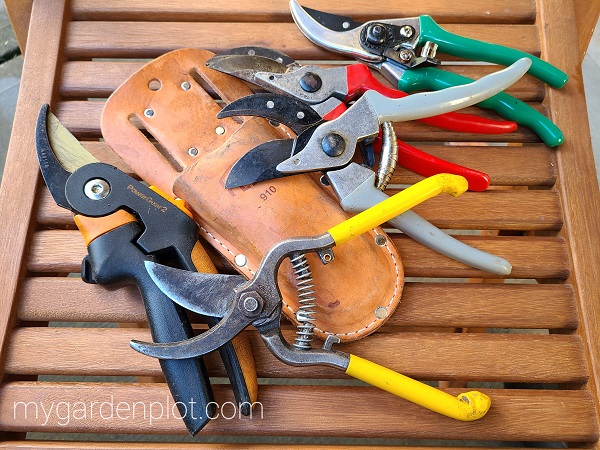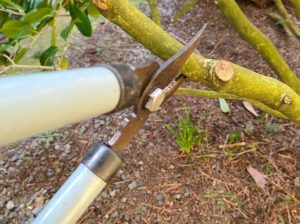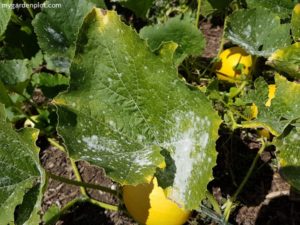Buyer's Guide
How To Choose Garden Hand Pruners (Pruning Shears, Secateurs)
Garden hand pruners are an essential gardening tool found in every pruning kit. It is not surprising that many of us begin our gardening journey with a collection of discarded old tools before realizing what is really needed. And in this case, what are the best hand pruners to maintain your plants. Before you prune, make sure you have the proper pruners for the job. In this buyer’s guide, we will take you through the main points to consider when making a decision to purchase the best hand pruners for you, understand the difference between bypass vs anvil pruners, and how to keep your new hand pruners sharp and clean. Garden hand pruners are also sometimes referred to as hand-held pruning shears, pruning clippers, or secateurs. Secateurs is more commonly used in British English.
Hand pruners are used to cut thin branches and untidy shoots, deadheading flowers, and removing dead or diseased stems. Pruning is a major process in maintaining a plant’s health and shape. Good quality pruners are necessary for clipping thin tree branches and trimming shrubs, and in the kitchen garden for harvesting vegetables. Generally most are suitable for removing stems about the diameter of a little finger – generally up to 1/2 inch thick, though some have the capacity prune up to 1 inch. Needless to say, most pruning tasks will be done with a pair of hand pruners. But how to choose garden pruners that are best suited for trimming a shrub or tree, green wood or deadwood? And why should you consider having a pruner holster?
What To Consider Before Buying Hand Pruners
With so many garden pruners or secateurs on the market, choosing the best hand pruners can sometimes be confusing. There are basically two types of cutting mechanisms, bypass pruners and anvil pruners. When choosing a pruner, you will need to consider your budget. You will need to decide if you wish to keep it for a long time and willing to spend for a more durable brand of high quality pruners. Or if a budget model for occasional use fits your needs. Or perhaps your tools are often lost in the garden? Then a more affordable pair of pruners may be a better option for inexpensive replacements. The price of a pair of hand pruners will vary depending on the type, model and quality of the blade. Needless to say, taking care of your pruners or any garden tool is essential. See also blade sharpening and cleaning tips below.
What Is A Bypass Pruner?
A bypass pruner is the most popular type and is the go-to with any gardener. They work similarly to scissors with a cross-over curved blade action which will not splinter the stem’s edge. Sharp bypass pruners are best for making clean, close cuts on living wood, green stems, and reaching into tight spots. Bypass pruners are preferred by most gardeners as they tend to damage a stem less than an anvil type pruner. However, how many pruner types you have depend on your pruning needs. Most avid gardeners will likely have a pair of bypass for live wood, and a pair of anvil pruners for deadwood in their pruning kit.
What Is An Anvil Pruner?
Anvil pruners have one sharpened blade that cuts down onto a flat (anvil type) platform. Similar to using a knife on a cutting board. A pair of sharp anvil pruners are more powerful than a bypass pruner. If the cutting blade is not kept sharp, it will crush the stem or potentially split the bark on a woody plant. Anvil pruners are best designed for cutting deadwood stems and branches.
Ratchet Pruners
There are also ratchet hand pruners available with either bypass and anvil type pruners. This mechanism may take longer when pruning but helps ease effort and hand strain for any gardener who may lack hand strength. Ratchet pruners work using a notch spring action that cuts the stem gradually as you squeeze and release the handles.
SEE MORE: Scroll to the end of the page for information how to care for your pruners, sharpening blades and about pruning holsters.
Six Recommendations
Best Hand Pruners (Pruning Shears, Secateurs)
Our Top Pick
Felco 2 Classic Hand Pruner
The Felco brand is consistently a winner with most passionate gardeners and the original Felco 2 pruner is our top pick as a versatile all-around pruning shear for the garden. The Felco 2 Classic Hand Pruner is made with high-quality hardened steel blades and has a comfortable, ergonomic grip suitable for most hand sizes. It has a 25 mm (nearly 1-inch) cutting capacity, and the lower curved anvil-shaped blade lends to tackling heavy-duty pruning. They sharpen easily, and the blades keep sharp for longer than other pruners. All parts, including the blades, are replaceable. They can be on the expensive side, but this is a pruner that keeps for the long haul in your pruning tool kit. This particular Felco model has a long history of dependability in the gardening world, going back to 1948 when it was first launched. And still today, the Felco 2 is as durable and favoured worldwide.
Best Budget Option
Corona 3180 Bypass Pruner
Corona brand is a well-known, dependable brand with a more affordable price point. The Corona 3180 Bypass Pruner is a great choice if you occasionally need to do some light pruning and do not wish to spend too much. The blades are replaceable and made of forged steel. It has a 1-inch cutting capacity. The blades need to be sharpened more frequently if used often in the garden. The grip is a little better suited for larger hands but still very workable for most.
Specialty Pick
ARS HP VS-8XR Rotating Handle Bypass Pruner
The ARS HP VS-8XR Rotating Handle Hand Pruner is a winner for any gardener looking for a high-end quality bypass pruner with a rotating handle and good ergonomics to help hand weakness. Easy to use for any hand size. The high carbon steel blades are hard-chrome plated and remain impressively sharp even during extensive work. Replacement blades are available.
Top Anvil Choice
Felco F31 Pruning Shears Anvil Hand Pruner
The Felco F31 Pruning Shears Anvil Type Hand Pruner will reliably deliver with durability and powerful clean cut. If you need to get an anvil type pruner for cutting hard or deadwood, this is our personal pick. The blade is made of hardened steel, and as with most Felco products, all the parts are replaceable. It is comfortable to hold and is suitable for larger hands too. Our top pick for an anvil type pruner.
Best Budget Option
Fiskars Power-Lever Anvil Pruner
The Fiskars Power-Lever Anvil Pruner has good value at an affordable price. Their anvil blade is effective for pruning deadwood and cutting dried winter-damaged stems. The non-slip grip adds comfort when pruning and is suitable for most hand sizes. Some users have noted a similar weakness that the locking mechanism isn’t too reliable. But for its price point, this Fiskars anvil pruner offers good value for money.
Specialty Pick
The Gardener’s Friend Ratchet Anvil Hand Pruner
For anyone with weak hand strength or arthritis, The Gardener’s Friend Ratchet Anvil Hand Pruner offers a powerful clean cut with less effort and pain. It can be used with any cut, whether trimming flowers and shrub stems and branches. The mid-range price point, along with the ratchet mechanism power cut and the ergonomic design, makes this a good pruning option for any gardener with hand mobility problems.
Pruning Holster
We highly recommend having the all-important pruning holster with any pruning job. This way you don’t lose your hand pruners in the garden, but instead have them always at your side. It also protects the blades of your pruner. We prefer a leather holster that has two attachment options with a clip or belt loop. Once you start using one of these handy pruning holsters, you will never go back to not having one. They are generally inexpensive, and unless you misplace it, the holster will last you a long time.
Pruner (Secateur) Care And Blade Sharpening
Any pruner will last longer when they are taken care of. Never force to cut through a thicker branch than your pruner is rated for as this will no doubt eventually damage your pruners, and needless to say the plant. In between cuts get into the habit to disinfectant blades by wiping the blades with alcohol. This helps to reduce disease spread between plants. Always clean pruners with water after use, dry and use a lubricant oil, like WD-40 spray. Wipe off any excess oil before storing. Keep handy a pruner sharpener to fine-tune the blade edge. A clean pruning cut with sharp blades ensures your plant heals quickly and keeps healthy from disease.
BUYER’S GUIDE: How To Choose The Best Pruning Saws






